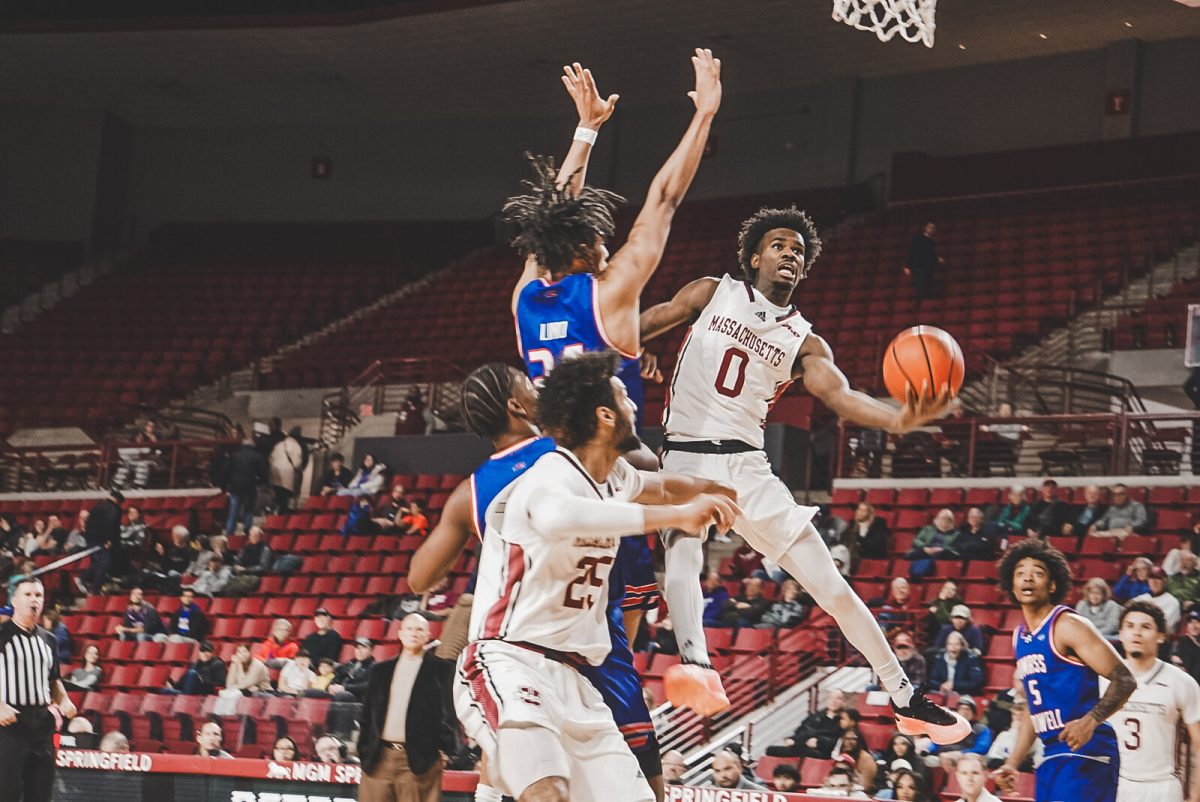On April 9, 2024, HBO released its long-anticipated original documentary, “Brandy Hellville & The Cult of Fast Fashion,” which covers the toxic, racist, discriminatory, sexist and fatphobic work culture of Brandy Melville. With its roots beginning in Italy, Brandy Melville is a clothing company geared towards young women, only producing clothes deemed as “one size fits all.”
In this documentary, former employees of Brandy Melville, investigative journalists, members of The Or Foundation, a non-profit organization that highlights ecological prosperity through alternative styles of fashion, CEOs of sustainable clothing companies Remake and and Matteo Biffoni, the mayor of the biggest European city that produces fast fashion brands, Prato, Italy, speak out on the dark truth of the company.
Most former employees shared a similar experience of being approached by a Brandy Melville employee and being asked on the spot, “Hey, do you want a job?” This flattering and unexpected question may seem innocent, but behind the scenes were older men hiring girls based on their beauty and physical appearance.
In addition to being hired, many girls shopping at a Brandy Melville store can be asked at any time to have their photo taken for “store style,” which was used for “coming up with new ideas for clothing.” These photos were sent to executives at Brandy Melville, and they decided whether they were “inspired” by an outfit. There was a system created by Brandy Melville to instruct the person working the register to take a photo of female customers, who were checking out, and offer them a job.
Kate Taylor, an investigative journalist at Insider, is one of the most prominent figures in the documentary. Taylor has also been gaining recent recognition for her expose on Dan Schneider featured in “Quiet on Set: The Dark Side of Kids TV.”
“I’ve been able to go deeper on these big stories, which brought me to this brand that teenagers love that most adults haven’t heard about,” Taylor said. “The first thing you hear about Brandy Melville is that it’s one size fits all … and that size is tiny. I was like, this is something that doesn’t seem like it should be happening in fashion anymore.”
Unlike most fashion brands that have been pushing towards more inclusivity with plus-size and diversity, Brandy Melville has been doing the opposite. The company believes that it’s okay’ to have a strict audience for their brand: skinny, traditionally beautiful, young, white girls.
“I do remember one time, there was a customer who picked up a jacket and she told me, ‘My granddaughter looks like your size, you know, kind of bigger,’” Cate said. “And those words, ‘kind of bigger,’ sent my entire…my entire shift into a mental orbit of me thinking, ‘Am I not thin enough to work here?’”
When watching this documentary for the first time, I was completely shocked and disgusted by how this seemingly innocent company was running everything behind the scenes. I’ve been shopping at Brandy Melville locations since I was a freshman in high school. I loved going to the mall with my friends to see what new and cute designs the store had laid out for its clientele. Even while working on this story, I felt a sort of bias towards myself while being a white girl who had always been able to fit comfortably into Brandy Melville’s clothing. I could never imagine how self-deprecating it would feel to walk into a store like Brandy Melville and feel unacceptable from the moment you step into the aesthetically pleasing, Americana-flavored store.
Brandy Melville opened its first location in the US in 2009 in the Westwood neighborhood of Los Angeles, close to the University of California, Los Angeles campus. Thousands of the picture-perfect California girls, that the company had in mind for their audience, came flocking to the store instantly. This occurred around the time social media apps like Instagram and Tumblr were exploding in popularity.
One of these teenage girls who was hired as a photographer for Brandy Melville was “Willow.” Willow would take photos of herself in Brandy Melville’s clothing and post them on Tumblr. A photo of her in a Jada dress, which was an open-back dress, revealing the bra, received over 100,000 reposts on Tumblr and got her a job at Brandy Melville. Willow described working at the company as “complete chaos.”
“It was a mess,” Willow said. “I was really surprised that they were able to have such a large business at that scale … It was like a warehouse with crap everywhere.”
The CEO of Brandy Melville, Stephan Marsan, an Italian man in his late 30s with no sense of style, is running one of the biggest fast fashion companies for teenage girls. Marsan knew that young girls loved social media, so he used that as his main marketing tactic. He would encourage store owners to pay the “good-looking” girls more money, even if they weren’t good at their jobs.
In most cases, teenagers are expected to get their first part-time jobs around the ages of 14-16 years old. Coming from a family of hard workers who dedicated their lives to endless hours at their jobs, I was inspired to lead my life of work the same way. I was taught to work as much as I could, save up money for school and put in 110 percent into any job that I take on. The values that are taught at Brandy Melville do not meet this criterion. If a company is going to hire young girls between 14 and 18 years old, wouldn’t they want to help them shape and mold their minds into being the best workers they can be rather than focusing on how cute their outfits are for the day?
Marsan has very racist beliefs. After opening the first Brandy Melville store in China in 2019, he was “happy” with Chinese people, but not Black people. One former employee, “Lee” stated that when she would go back to the stockroom, she noticed that the employees were mostly people of color being hidden away to work in the back of the store.
Former employee “Kali,” a young African American girl who worked in a Brandy Melville stockroom, said, “There was no white people working in the stockroom. If you’re white, you had to be in sight…But it wasn’t something we were necessarily mad about because I just loved being around my people. Like, people of color, Hispanic and Black people. So, it was kind of like, you win some, you lose some.”
It was also revealed in the documentary that there was a group chat called “Brandy Melville Gags,” where the top executives at Brandy Melville sent extremely racist and sexist jokes and photos to one another. Images included employees doing the Nazi salute, Marsan’s face being photoshopped onto Adolf Hitler’s body, comparing African Americans to chimpanzees and hundreds of pornographic images sent to one another.
This company’s main audience is young girls in Generation Z, how on Earth did they get away with this behavior for so long? Generation Z has become known for its advocacy towards equality and peace for all. The top executives boast this message of creativity, happiness and “good vibes,” but this group chat blatantly shows their true colors and reveals that they could care less of sticking to Brandy Melville’s supposed “core values.”
A prominent aspect that the documentary dives into is how fast-fashion brands like Brandy Melville are blatantly participating in the wasteful and unethical practice of making cheap clothing. Former employees said they would receive shipments where holes would be in the seams of shirts, and putting a tag into a piece of clothing would sometimes destroy the product.
Brandy Melville’s clothing is produced in Prato, Italy, which is considered one of the most important textile hubs in Europe. For about 100 years, Prato specialized in luxury brands, with people from poor regions of Italy going there for work. In the ‘90s, Chinese people started arriving, working for themselves and opening Pronto Moda (fast fashion) factories.
Ayesha Barenblat, CEO of Remake, an advocacy group focused on helping garment workers around the world, says, “There is this perception, somehow, that if it’s made in Italy that it’s somehow better. The truth of the matter is that there are good and bad factories everywhere, and if you want to see sweatshops, you can see them in Prato, and you can see them in Los Angeles, and in the UK.”
While being unethical and non-eco-friendly, Brandly Melville also essentially stole ideas and designs from their young female employees.
The only way that Brandy Melville gave these girls “credit” for their ideas was by naming a product after them (i.e. “Jocelyn’s Shirt” was purchased off Jocelyn). In some cases, Brandy Melville would pick their favorite employees from certain stores and fly them out to places like China and Italy to try on samples of clothing for hours on end. These girls would be put on business class flights, live in luxury hotels, eat at the best restaurants in the area and receive “queen-like” treatment.
“Brandy Melville harnesses that energy of ‘Teenage girls can do anything. Teenage girls have this amazing design capability. They have this eye for fashion.’ They are paying these people close to minimum wage to do what, at another company, the senior leadership might be doing, to make them extremely rich,” Taylor said.
Employees at Brandy Melville were also required to take “store-style” pictures at some point during every shift they had. For some employees, the picture would only take a minute to capture, others would take 20-30 minutes. Employees were told that these photos would be sent to Marsan and other top executives in case they wanted to “hire any employees as models.” It even got to the point where chest and feet pictures were starting to be requested by Marsan and his team.
If Marsan didn’t like one of the girls in the photos he received, he would immediately have them fired because they weren’t “attractive” enough to work at Brandy Melville. Former employee “Melissa” was one of these girls:
“When I was working in Berlin, some Brandy Melville guys from Italy came to the shop and observed us, made weird comments about us and our bodies,” Melissa said. “They told me that I had to leave and I was so shocked…One of these managers that came to the shop did not like my body type. He did not find me, like, physically attractive, and that I’m not a typical Brandy girl.”
When Kate Taylor released her investigation on Brandy Melville in 2021, people who had worked at Brandy Melville reached out to her and started sharing their stories with her. Hundreds of people quit their jobs at Brandy Melville and started sharing the truth of their toxic work environment.
Despite all of this, Brandy Melville, is still a successful company. The company never published an apology on social media, the only step they took was turning comments off on their social media pages. This company is continuing to promote unethical work practices, exploiting young girls and taking advantage of their ideas and creativity.
“We know that Brandy Melville, from the beginning, has said, ‘One size fits most,” Taylor said. “This isn’t for everyone.’ So, by not apologizing, they’re not hypocrites because they are exactly who they say they are. They are just racist, sexist pigs.”
Paige Hanson can be reached at [email protected] and followed on X @Paige_Hanson1.




















